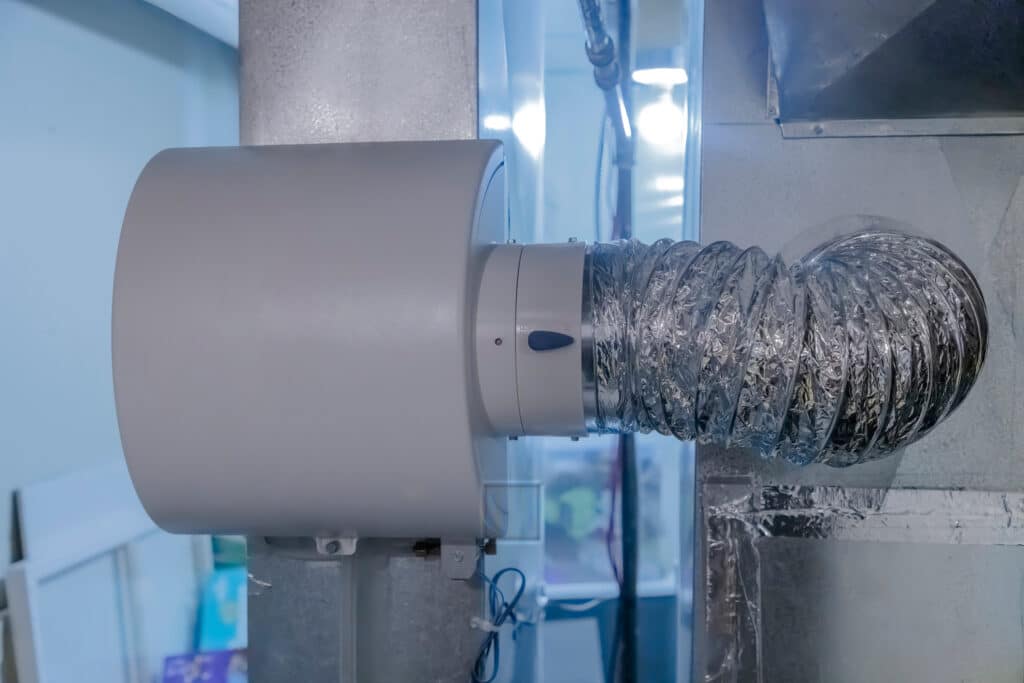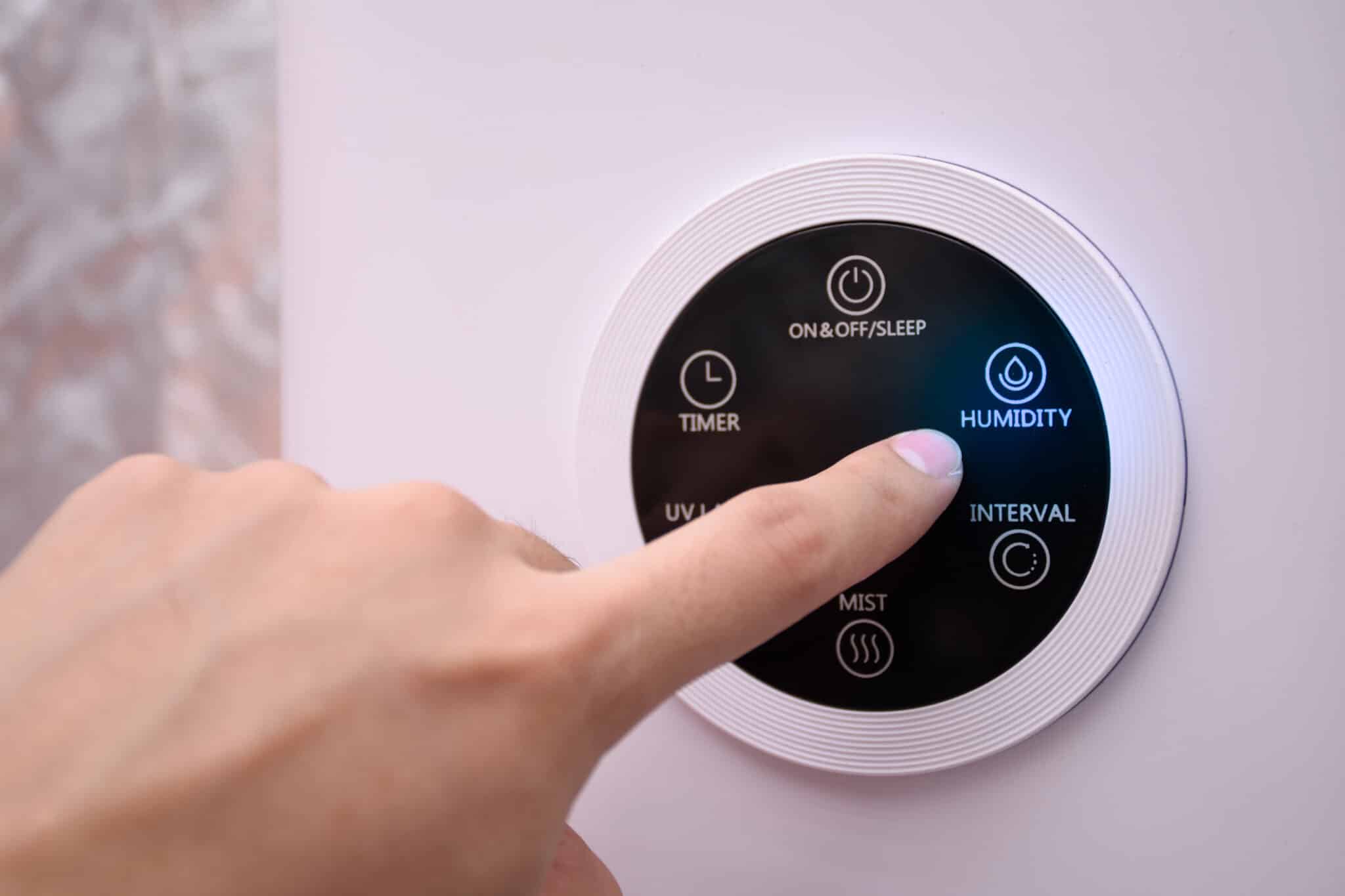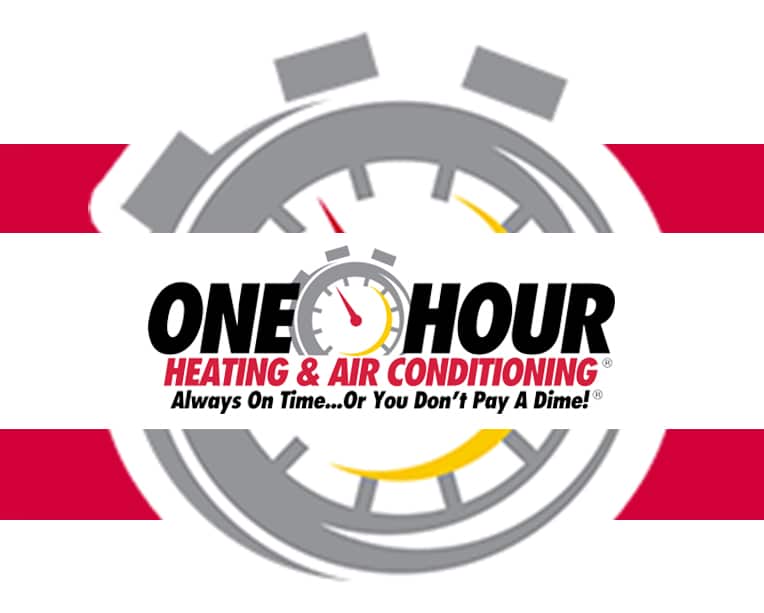Humidifiers – Are you noticing that the air feels extra dry as winter rolls into San Diego? Many people experience dry skin, scratchy throats, and even static shocks around the house during this time, making humidifiers a helpful solution.
While it might seem minor, the lack of humidity can make life a bit uncomfortable. That’s where humidifiers come in. These handy devices add moisture to the air, helping you breathe easier and feel more comfortable at home. Curious about how they work and if one could help you this winter? Let’s dive in!
What is a Humidifier and How Does it Work?
A humidifier is a device designed to boost moisture levels in indoor air, playing a vital role in improving indoor air quality—particularly during dry winter months.
In simple terms, a humidifier adds water vapor into the air, making the air feel less dry and a whole lot more comfortable.
Different types work in different ways—some blow air over a wet filter, others heat water to create a gentle steam, and some even use ultrasonic vibrations to make a super fine mist.
Once that moisture is in the air, it balances things out, which can make a big difference in how your skin, sinuses, and even your furniture feel during the dry winter months.
Using a humidifier can make your home way more comfortable. It helps ease that annoying dry skin, relieves stuffy sinuses, and can even prevent sore throats—all while keeping the air quality in check.
For those in San Diego, where the air can get surprisingly dry in winter, a humidifier is a simple way to keep your indoor environment cozy and healthy.

Different Types of Humidifiers
When choosing a humidifier, it helps to know a bit about the different types and how each one works. Some are better for certain spaces or offer specific benefits, so let’s break down the main types to help you find the right fit for your home.
Cool Mist Humidifiers
Cool mist humidifiers are popular for releasing a refreshing, cool mist into the air, making them especially comfortable for dry environments. These humidifiers work by either using a fan or an ultrasonic method to turn water into a fine mist that spreads throughout the room, adding moisture without raising the temperature.
Since they don’t involve any heating element, they’re a safe choice for homes with children or pets, reducing the risk of accidental burns. Cool mist humidifiers are also efficient, using minimal energy while covering larger spaces effectively.
Additionally, they’re easy to maintain, with many models offering user-friendly features like replaceable filters to keep the mist fresh and clean.
Warm Mist Humidifiers
Warm mist humidifiers, also known as steam vaporizers, work by heating water to create a warm mist that’s released into the air, adding both moisture and a cozy warmth to the room.
This warm mist can be comforting during colder nights, making these humidifiers ideal for small to medium-sized rooms where a bit of warmth is welcome. Since the heating process can help eliminate bacteria and other impurities in the water, warm mist humidifiers are also a good choice for those looking for extra hygiene benefits.
Many models are quieter than cool mist options, providing a peaceful environment for sleeping or working. These humidifiers can also help ease breathing for those dealing with colds or allergies, as the warm, moist air can feel soothing on dry throats and nasal passages.
Ultrasonic Humidifiers
Ultrasonic humidifiers use high-frequency sound vibrations to produce an ultra-fine mist, creating a near-silent operation that’s perfect for bedrooms or nurseries. Their quiet performance makes them ideal for spaces where noise reduction is important, allowing for restful sleep or focused work.
These humidifiers are energy-efficient, using minimal electricity to produce either a cool or warm mist, depending on the model, which gives you flexibility in choosing the most comfortable option.
Because they don’t rely on fans or boiling water, ultrasonic humidifiers are often compact and sleek, fitting seamlessly into various rooms and styles. They’re low-maintenance, with no filter replacements needed, making them a convenient choice for those who prefer easy upkeep.
Evaporative Humidifiers
Evaporative models take a unique approach, using a wick filter to absorb water, while a fan blows air through the filter to release natural moisture into the room. Since these devices rely on natural evaporation, there’s minimal risk of over-humidifying, making them a reliable choice for homes with changing humidity needs.
They’re durable and effective for larger areas, providing steady, even moisture without creating a damp feeling. Many people prefer evaporative units for their simplicity and efficiency, as they don’t require heating elements or advanced technology to work effectively.
Why San Diego Winters Are Dry
San Diego may be known for its mild weather, but winters here can be surprisingly dry, causing discomfort for many residents. Several factors contribute to the low humidity in San Diego’s winter season, from coastal air patterns to seasonal climate shifts.
Being near the coast, San Diego often experiences air that lacks sufficient moisture as colder temperatures reduce the air’s ability to hold humidity. Additionally, seasonal changes can alter air movement, bringing dry inland air into the area.
One major contributor is the Santa Ana winds, strong, dry winds that originate from inland desert areas and blow toward the coast, further decreasing humidity levels. These combined factors create a dry atmosphere that can lead to common issues like dry skin, respiratory irritation, and static electricity in homes.
Benefits of Using a Humidifier During Dry Winters
Adding a humidifier to your home during San Diego’s dry winters can bring a host of benefits, making it easier to stay comfortable and healthy. With the increased moisture in the air, many common issues from dry winter air can be reduced or eliminated, creating a more enjoyable indoor environment.
Improved Health and Comfort
One of the biggest advantages of using a humidifier is how it can improve your overall health and comfort during winter. By keeping humidity levels balanced, a humidifier can help relieve symptoms like dry skin, scratchy throats, and irritated sinuses, making it easier to breathe and feel comfortable.
People with respiratory issues, like asthma or allergies, may notice fewer flare-ups or less dryness in their nasal passages, as the added moisture helps keep airways hydrated. Humidifiers also help keep mucous membranes moist, which can reduce the likelihood of catching colds or experiencing persistent coughs.
Better Sleep Quality
Dry air can disrupt sleep, especially if it leads to dry throats, nasal congestion, or snoring. By adding moisture to the air, a humidifier can create a more restful sleeping environment. With improved breathing and less irritation, it’s easier to fall asleep and stay asleep through the night without waking up feeling parched or congested.
For individuals who snore due to dry air, a humidifier can also help reduce this issue, providing a quieter sleep environment. The consistent humidity level can benefit everyone in the household, promoting restful sleep and making nights more comfortable overall.
Preservation of Home and Belongings
Beyond health benefits, a humidifier can also protect your home and belongings from the effects of overly dry air. Wood furniture, floors, and musical instruments, like guitars or pianos, can crack or warp when exposed to low humidity over time.
By maintaining an ideal humidity level, a humidifier can help preserve these items and reduce the need for repairs or replacements. Houseplants, which can struggle in dry conditions, will also benefit from the added moisture, looking healthier and thriving throughout winter. The right humidity level even reduces static electricity buildup, which can be a nuisance when handling electronics, fabrics, or sensitive items.
How to Choose the Right Humidifier for Your Home
Finding the right humidifier for your home depends on a few key factors, from the size of your space to specific humidity needs. With so many types available, it’s worth taking a closer look at what will suit your home best.
Considerations Based on Home Size
One of the first things to think about is the size of the area you want to humidify. Smaller humidifiers are ideal for bedrooms or small offices, while larger spaces like living rooms or open-plan areas may need a more powerful model.
Many humidifiers list their coverage area on the packaging, making it easier to match the size to your room. For large rooms, cool mist or ultrasonic humidifiers often work best, as they can disperse moisture more evenly. In smaller rooms, warm mist humidifiers are effective and add a cozy warmth, which can be especially nice on cool nights.
Choosing Based on Humidity Needs
Every home has unique humidity needs, and it’s important to choose a humidifier that can meet them. Some people may only need light, and occasional moisture, while others in particularly dry environments might need a model that can keep up with frequent use.
If you or someone in your household has respiratory sensitivities, an ultrasonic humidifier with a fine, even mist may be best, as it can produce moisture without any mineral buildup.
Adjustable models that let you control the output level can be helpful for tailoring the humidity to your preference. For those looking for extra warmth, a warm mist humidifier provides comforting heat along with moisture, balancing both warmth and hydration.
Energy Efficiency and Maintenance
Another important factor is energy efficiency, especially if you plan on using your humidifier regularly. Ultrasonic and evaporative models are generally energy-efficient choices, requiring less electricity to maintain ideal humidity levels.
Maintenance is also worth considering since humidifiers need to be cleaned regularly to prevent mold and bacteria buildup. Look for models with easy-to-clean parts, and consider ones that have filter options to help purify the water before it’s released into the air.
Many models now feature auto-shutoff functions and other energy-saving features that can help keep electricity usage low, which is particularly useful if you use the humidifier frequently.
Tips for Proper Humidifier Use in San Diego Winters
Using a humidifier effectively during San Diego’s dry winter months can make a significant difference in indoor comfort, but a few guidelines will help you get the most out of it. Here are some tips to ensure you’re using it to its full potential.
Set Up and Placement in Your Home
Placing your unit in the right spot is essential for even moisture distribution. Ideally, it should be placed on a raised surface in the center of the room, away from walls, furniture, or electronics that could be affected by excess moisture.
For larger spaces, consider setting up multiple units or choosing a high-output model. Bedrooms benefit from positioning it near the bed, as this allows you to breathe in the humidified air throughout the night, which is particularly helpful for relieving dryness.
Maintaining Optimal Humidity Levels
While humidifying the air is beneficial, too much moisture can cause its own set of problems. Aim to keep indoor humidity between 30-50%, as this range is generally ideal for comfort and health. Many units come with built-in hygrometers that let you monitor and adjust the settings accordingly.
If your device doesn’t have this feature, a standalone hygrometer is a helpful investment. Balancing humidity levels prevents mold growth and keeps your indoor environment healthy while ensuring you avoid issues like condensation on windows or walls.
Cleaning and Maintenance to Avoid Mold and Bacteria
Regular cleaning is crucial to prevent mold, bacteria, and mineral buildup that could lead to poor air quality. Most manufacturers recommend emptying and refilling the water tank daily and giving it a deeper clean every few days.
Using distilled or demineralized water can reduce mineral deposits, making maintenance easier and keeping the mist clean and fresh. Be sure to follow any specific cleaning instructions provided by the manufacturer, and replace filters as needed to maintain optimal performance and air quality.
Common Mistakes to Avoid When Using a Humidifier
While using a humidifier can significantly improve indoor comfort during dry winters, some common mistakes can reduce its effectiveness or even cause issues. Here are a few to avoid for the best experience.
Over-Humidifying the Home
One of the most frequent mistakes is adding too much moisture to the air. Although maintaining proper humidity levels helps alleviate dryness, over-humidifying can lead to excess moisture, which can encourage mold growth, dust mites, and general discomfort.
To prevent this, keep humidity within the recommended 30-50% range. Using a hygrometer to measure and monitor humidity levels ensures you maintain a balanced, healthy indoor environment.
Neglecting Regular Cleaning
Regular maintenance is essential to keep your unit in good working order and prevent bacteria and mold from building up in the water tank. Neglecting cleaning can result in poor air quality and even cause respiratory irritation.
Cleaning out the water reservoir and any replaceable parts every few days is a good practice, especially if you’re using it daily. Following the manufacturer’s instructions and using distilled water can make cleaning easier and keep the air fresh and healthy.
Using the Wrong Size or Type for Your Space
Another common issue is using a unit that’s either too large or too small for the space. If it’s too powerful, it may lead to over-humidifying in a smaller room, while an underpowered device may struggle to add sufficient moisture to larger spaces.
Additionally, choosing the wrong type—like a warm mist unit in a large, open space where a cool mist would work better—can limit its effectiveness. Consider the room size and specific humidity needs when choosing your device, and always check the coverage area listed on the product.
Breathe Easy This Winter with One Hour Heating & Air Conditioning San Diego
Ready to enhance your comfort this winter in San Diego’s dry air? Let One Hour Heating & Air Conditioning San Diego help you find the perfect humidification solution tailored to your home.
With expert guidance and quality service, we ensure your indoor air stays balanced and refreshing, making every room a comfortable retreat. Reach out today, and let us bring lasting relief to your home this season!

FAQs About Humidifiers
What type of humidifier is best for San Diego’s winter climate?
Cool mist and ultrasonic models are often ideal for San Diego’s mild, dry winters. They add moisture efficiently without excessive warmth, making them versatile and suitable for both small and large spaces.
How often should I clean my humidifiers?
It’s best to clean the water reservoir and components every few days if you’re using it regularly. A thorough cleaning once a week helps prevent mold and bacteria, ensuring you’re breathing clean, healthy air.
Can I leave my humidifier on all night?
Yes, running it at night can enhance sleep quality by reducing dryness and soothing respiratory passages. Just ensure it’s set to an appropriate level and placed safely to avoid over-humidifying the room.
What humidity level should I aim for in winter?
The ideal indoor humidity level is between 30-50%. This range helps maintain comfort, supports health, and prevents excessive moisture that can lead to mold or mildew.
How do I know if I need a humidifier?
If you experience dry skin, frequent sinus irritation, static electricity, or notice dry air effects on houseplants and wooden furniture, a humidifier could greatly improve comfort and indoor air quality.



















